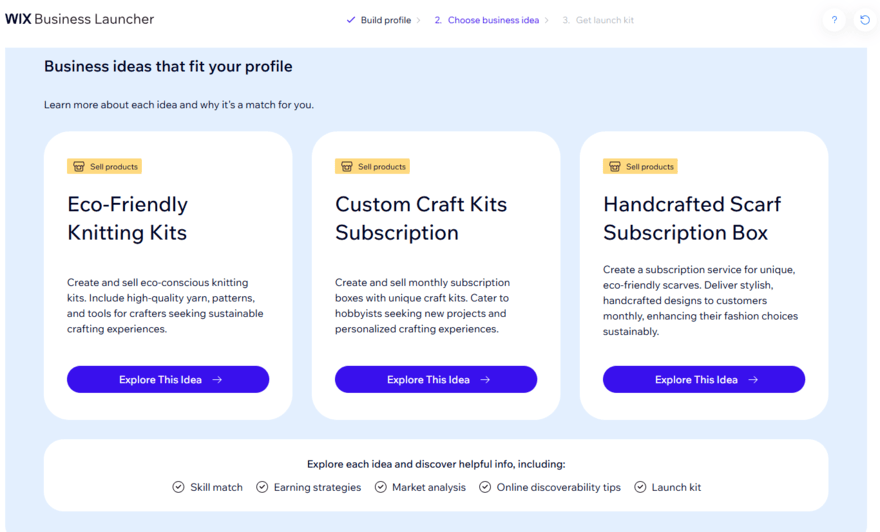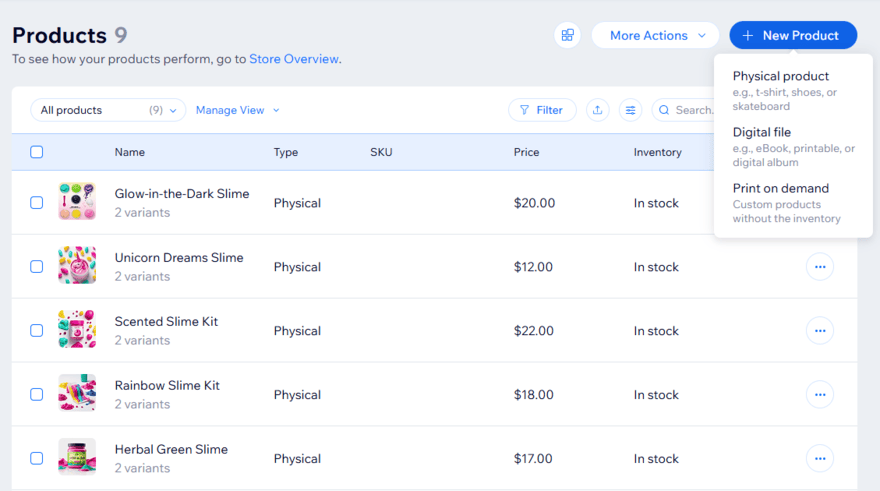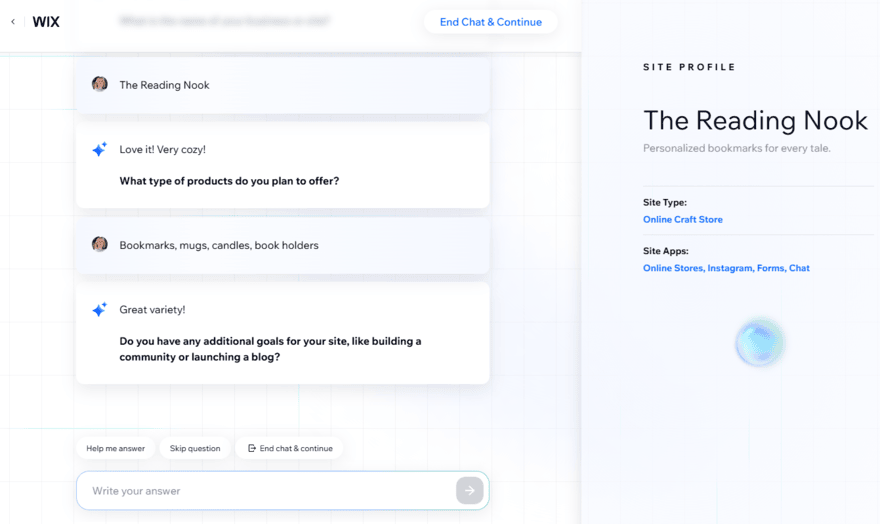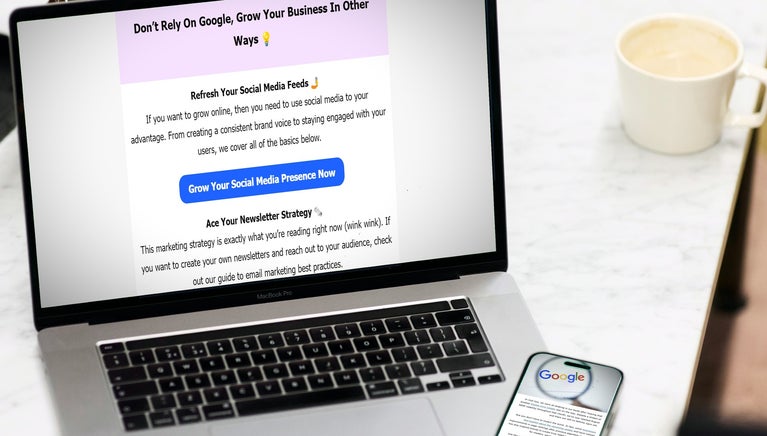What Is Ecommerce? A Complete Guide
We may receive a commission from our partners if you click on a link and purchase a product or service on their website. Learn more
If you’re looking to build an online store and carry out transactions online, that’s ecommerce. The term, short for “electronic commerce,” encompasses the entire process of online selling, including choosing which platform to sell products on, processing a payment from a customer, and shipping the goods.
In this beginner-friendly guide, I’ll walk you through everything you need to know about ecommerce, from definitions to expert tips.

Key Takeaways 🔍
- Ecommerce doesn’t just refer to online stores, but all of the activity around buying and selling products online
- Your online store can be open 24/7, unlike a brick-and-mortar store
- Competition is high when selling online, so make sure your brand stands out in your market
- Wix is a top-rated ecommerce website builder for all-in-one business management with advanced AI features
What Is Ecommerce?
Ecommerce is the practice of buying or selling products via the internet. Purchasing goods or services online has become the norm for many, whether through an online store, marketplace, or social media platform.
You might think of an online store when you hear “ecommerce,” but it’s actually an umbrella term for the entire journey, from listing products online to delivering goods to someone’s doorstep.
How Does Ecommerce Work?
Ecommerce is powered by a chain of workflows, including:
- An online platform that lists your products or services and their prices
- A checkout page and payment gateway that handles transactions securely
- A fulfillment or delivery service that gets your products to the customer
Businesses can connect directly with customers, build relationships, manage inventory, ship goods, and promote their brand, all from the web.
According to the International Trade Administration, global business-to-consumer ecommerce sales are expected to reach $5.5 trillion by 2027. Given this ongoing growth, most businesses operate in the online space – this can be their sole source of revenue, or a complement to in-person sales.
Standout Pros of Ecommerce
Besides the growing ecommerce market, there are plenty of benefits when it comes to setting up an ecommerce business, including lower costs, convenience, and scalability.
✅ Low Cost Setup
You don’t need to worry about rent, bills, staff salaries, or the cost of repairing a leaky ceiling if your business operates online. Ecommerce is a budget-friendly way to start selling to customers, and it can be a great starting point on your journey towards getting a brick-and-mortar store as well.
Of course, there are some fees involved with selling online, such as website builder subscriptions, transaction fees, and third-party plugins.
For example, Wix’s pricing for its premium plans ranges from $17 to $159 per month (billed annually). You can see key plan details in the table below:
 |  |  |  |  |
| Plan Name Free | Plan Name Light | Plan Name Core | Plan Name Business | Plan Name Business Elite |
| Price with our discount code $0 | Price with our discount code | Price with our discount code | Price with our discount code | Price with our discount code |
| Ecommerce | Ecommerce | Ecommerce | Ecommerce | Ecommerce |
| Recommended for Trying out Wix | Recommended for Portfolios and personal sites | Recommended for Small stores and growing businesses | Recommended for Established businesses | Recommended for Large businesses with complex needs |
| See Free Plan | See Light Plan | See Core Plan | See Plan | See Plan |
✅ 24/7 Shopping
If you run a brick-and-mortar business, your sales are limited to opening hours. An online store is open 24/7 and doesn’t need constant staff monitoring, meaning your business is accessible to customers when they need it.
If you’re worried about leaving your online store unattended, you can always install an AI chatbot to handle customer queries that come in outside of your standard working hours.
✅ International Reach
Your online store’s address is global. Instead of only targeting a local crowd with a physical shop, you can connect with customers in different cities, states, or countries.
Wix’s ecommerce website builder can help you sell internationally with Wix Multilingual (to translate content into 180+ languages), global SEO tools, international payment processing, and local currency conversion.
✅ Personalized Experiences
Another benefit of ecommerce is the fact that you can gather useful customer data to personalize the shopping experience. With Wix’s ecommerce and marketing tools, you can see your top paying customers, review where customers spend time on your site, assess returning customer behavior, and more.
This is hugely beneficial for businesses, since you can use this information to improve your content and marketing strategies. With this data, you can:
- Create personalized email campaigns
- Encourage loyalty with unique discounts
- Recommend relevant products to boost sales
- Retarget customers to avoid abandoned carts
✅ Room To Grow Your Business
A physical store is limited by its footprint, unless you have the funds to expand or relocate to a bigger space. With ecommerce, it’s much easier to scale your business depending on your goals, whether you want to sell more products, increase your traffic allowance, or access more advanced tools.
For example, Wix’s starting ecommerce plan ($29/month) includes up to 50,000 products, 50GB storage, five collaborators, access to Wix’s AI tools, and basic marketing and analytics, perfect for your new store. Then, as you grow, you can upgrade to the next tier ($36/month), which unlocks 100GB storage, 10 collaborators, and advanced sales tools, such as unlimited “back in stock” notifications.

✅ Technology Integration
With an online business, it’s easier to install and roll out new technology or software to improve the site and customer journey. This could be a new AI tool to help you streamline marketing campaigns, or accounting software to simplify workflows and save you time.
Common Challenges of Ecommerce
Naturally, ecommerce also has its challenges, with online sellers facing common pain points, such as competition and US tariff rates.
❌ Competitive Landscape
If you operate a brick-and-mortar store in your town, you’re competing with a select number of shops in the same area. With ecommerce, that number is impossible to measure, and it’s increasing all the time – there’s no limit to how many stores can operate on this digital street.
As more ecommerce businesses pop up, make sure your business finds gaps in the market to really stand out. After all, there could be hundreds of businesses selling the same type of product as you, so what sets you apart from the rest?
Top Tip 💡
If you’re struggling with where to start, Wix’s free Business Launcher can help generate business ideas and refine them before you launch. The tool walks you through three steps to help you generate relevant business ideas based on your skills, resulting in a personalized business action plan so you can get your ecommerce store off the ground quickly.
❌ Quality Control
For some ecommerce businesses, particularly those that use dropshipping or print-on-demand methods, quality control over products can get overlooked. This can result in unhappy customers if they receive a damaged, faulty, or incorrect product.
You can avoid this by producing, storing, and delivering the products yourself, but this can be a lot of additional work, especially if your business has a large catalog of goods.
❌ Delivery and Shipping
Speaking of delivery, this process can be a real pain point for ecommerce businesses. Customers expect to receive their orders quickly and without a hitch – how your products are shipped and delivered can really impact a customer’s first impression of your brand.
To ensure smooth delivery and shipping, I recommend:
- Using reliable shipping services – such as USPS, UPS, FedEx, and DHL
- Clarifying shipping times to customers – this can help manage expectations
- Offering local delivery or store pickup – it’s nice to give customers more options at checkout if possible
- Keeping track of orders – if an order gets lost, you can quickly find a solution to avoid further delay
- Requesting feedback – following an order, ask customers to share how they found the experience so you can make improvements if needed
Top Tip 💡
In the wake of President Trump’s tariffs on imported goods to the US, it can be cheaper for businesses to produce and store products in America to avoid high shipping costs.❌ Security Risks
Customers need to know their personal and financial details are safe when shopping with your online business. If your site lacks basic security measures, you run the risk of damaging your reputation, losing revenue, and facing legal battles.
Thankfully, most ecommerce platforms include security as a standard feature. As an example, if you make an ecommerce website with Wix, you’ll get these security measures included:
- HTTPS (Hypertext Transfer Protocol Secure)
- SSL certificate
- Anti-fraud protection
- 24/7 monitoring
Top Tip 💡
The best way to build trust with your customers is to be transparent about how you protect their data from harm. I recommend adding a privacy policy page or section to your site so visitors can easily see how your business is being proactive about security.❌ Customer Service
Navigating customer queries and complaints can be challenging for any business, but even more so for ecommerce stores, since you can’t offer support face-to-face.
To meet customer needs and demands quickly, it’s important to offer a variety of contact options (such as a contact form, live chat, and social media DMs).
You have to go the extra mile when delivering online support, and remember to respond to bad reviews and comments, as well as the good. This can really help your brand reputation and show that your business cares enough to listen to its customers.
❌ Staying on Top of Trends
Should your business jump on trends? That’s a hot debate, and a real struggle for many, especially because trends are constantly evolving and changing. It can be difficult to keep your finger on the pulse of what’s popular.
Staying aware of trends can help your business stay ahead of the competition, so I recommend checking across your social media accounts to see what your audience is engaging with the most, and see what trends your competitors are jumping on. It’s only worth hopping on the latest viral product or video for social media if it’s relevant to your target audience and business.
What Are the Types of Ecommerce Businesses?
The three main types of ecommerce business are B2C, DTC, and B2B. These models describe different ways that businesses can sell online:
- B2C (business-to-consumer) = your business sells products or services to customers
- DTC (direct-to-consumer) = your business sells directly to a customer, without going through a middleman, such as a retailer or wholesaler
- B2B (business-to-business) = your business sells products or services to other businesses
If you picture an online store (or look at these ecommerce website examples), it’ll typically be operating a B2C or DTC ecommerce model – B2C is the most popular type of ecommerce business. DTC is more hands-on and often used by retail businesses, but it’s also a great option if you’re selling via socials, like TikTok Shop or Pinterest.
You’re also not fixed to one type of ecommerce business for life. Brick-and-mortar stores can expand into ecommerce, and online stores can explore other forms of selling online, such as dropshipping or B2B.
What Can I Sell as an Ecommerce Business?
You can sell a variety of products or services as an ecommerce business, from physical items to online educational courses. Typically, these are the main types of products to sell:
- Physical products – items that customers can hold and use (e.g., jewelry, food, dog beds)
- Digital products – items that only exist digitally (e.g., music, videos, downloadable content)
- Subscriptions – repeat purchases of products through a subscription model (e.g., customers will receive your shampoo product every three months)
- Services – experiences that customers purchase or schedule online (e.g., beauty appointments, online courses, consultations)

Did You Know? 💭
If you’re using Wix’s online store builder, you can add three main product types to your catalog: physical products, digital files, and print-on-demand goods. You can also set up subscriptions for each product – Wix will ask for a subscription name, details (such as how often it repeats and the expiry date), and pricing. For services, simply install the free Wix Bookings app to offer appointments, classes, and courses.What Are the Different Ways To Sell Online?
A website builder is a great one-stop shop to build, manage, and grow your business – it’s what I’d recommend to anyone looking to create and grow brand awareness. But, for more casual sellers, online marketplaces help you reach active shoppers, and social media is a great low-cost option for sellers with engaged communities.
To get set up as an ecommerce business, you need to consider where you want to sell online:
| Ecommerce Platform | Example | Costs | Best for |
|---|---|---|---|
| Website builder | Wix | Medium | All-in-one business management |
| Online marketplace | Amazon, Etsy | Low | New sellers and entrepreneurs |
| Social media | TikTok, Instagram | Low | Businesses already active on socials |
Ideally, your business should adopt a multichannel selling strategy, meaning you use a few of these methods to optimize your chances of making a sale.
Of the three I’ve mentioned above, using an ecommerce website builder, like Wix, is the best option for any type of business. Not only can you design your site and set up marketing campaigns, but you can also integrate your store with online marketplaces (Wix recently partnered with Alibaba), and connect your store with your brand’s social media accounts. So, everything is handled in one dashboard, making it easy for you to monitor performance, sales, and engagement.
Starting Your Own Ecommerce Business: First Steps
If you want to start your own ecommerce business and build an online store, follow along with the steps below:
- Register for a business license
- Determine your niche
- Set your branding
- Make or source your products
- Set up your online store
- Build your community
Most importantly, do your research before getting started to ensure there’s demand for your products. Look at what competitors are doing in your market, pinpoint your target audience (recognize their pain points and needs), and find ways for your business to stand out.

Interested in Selling Online?
The world of ecommerce is vast and constantly growing, but it’s a welcoming environment for all kinds of sellers, from beginners to industry titans. If you’re looking to sell products or services online, remember to keep an eye on the common challenges, such as quality control and delivery, in order to reap the benefits of operating a 24/7 storefront.


Leave a comment